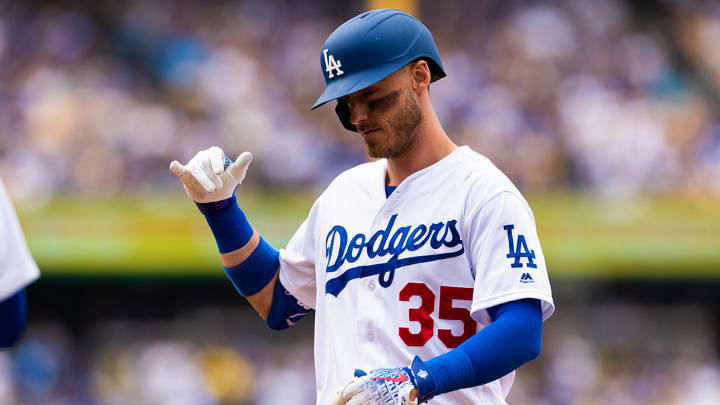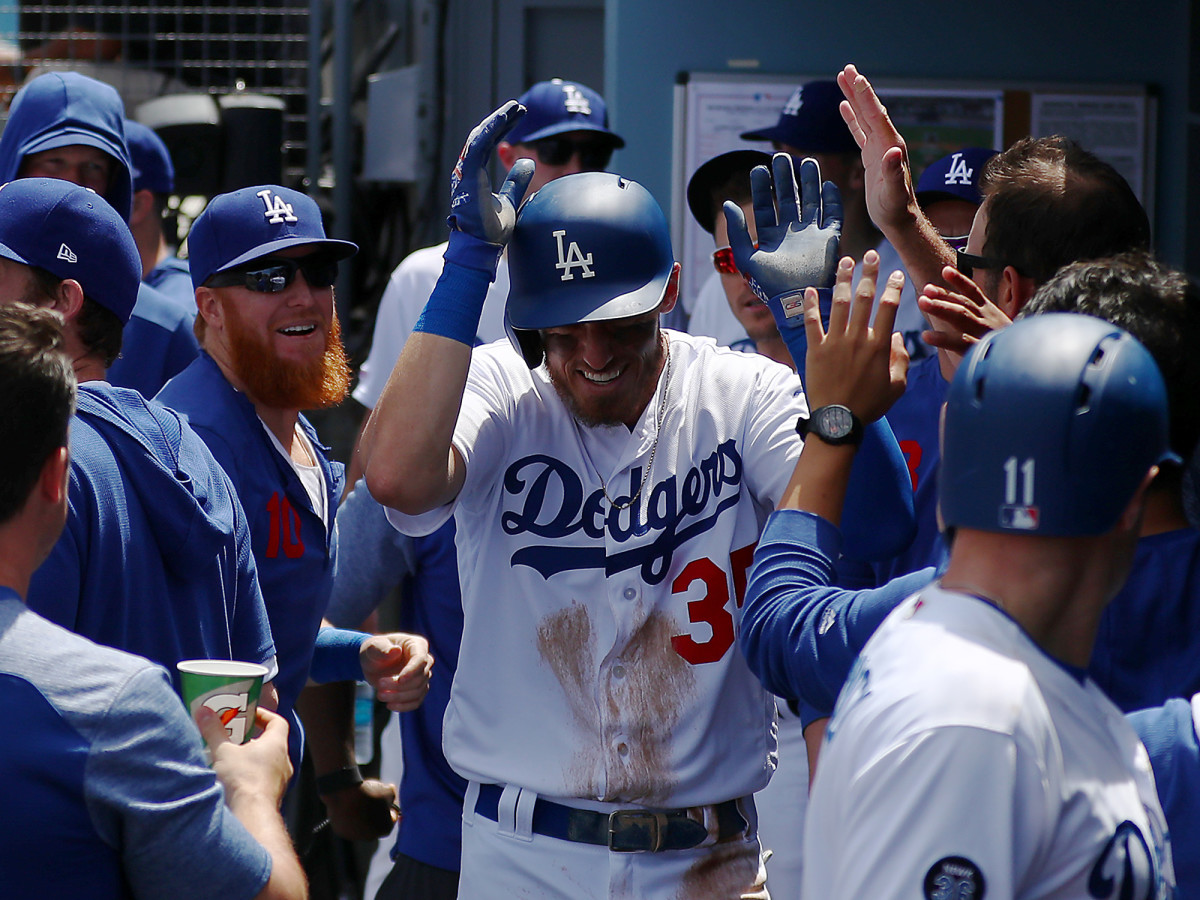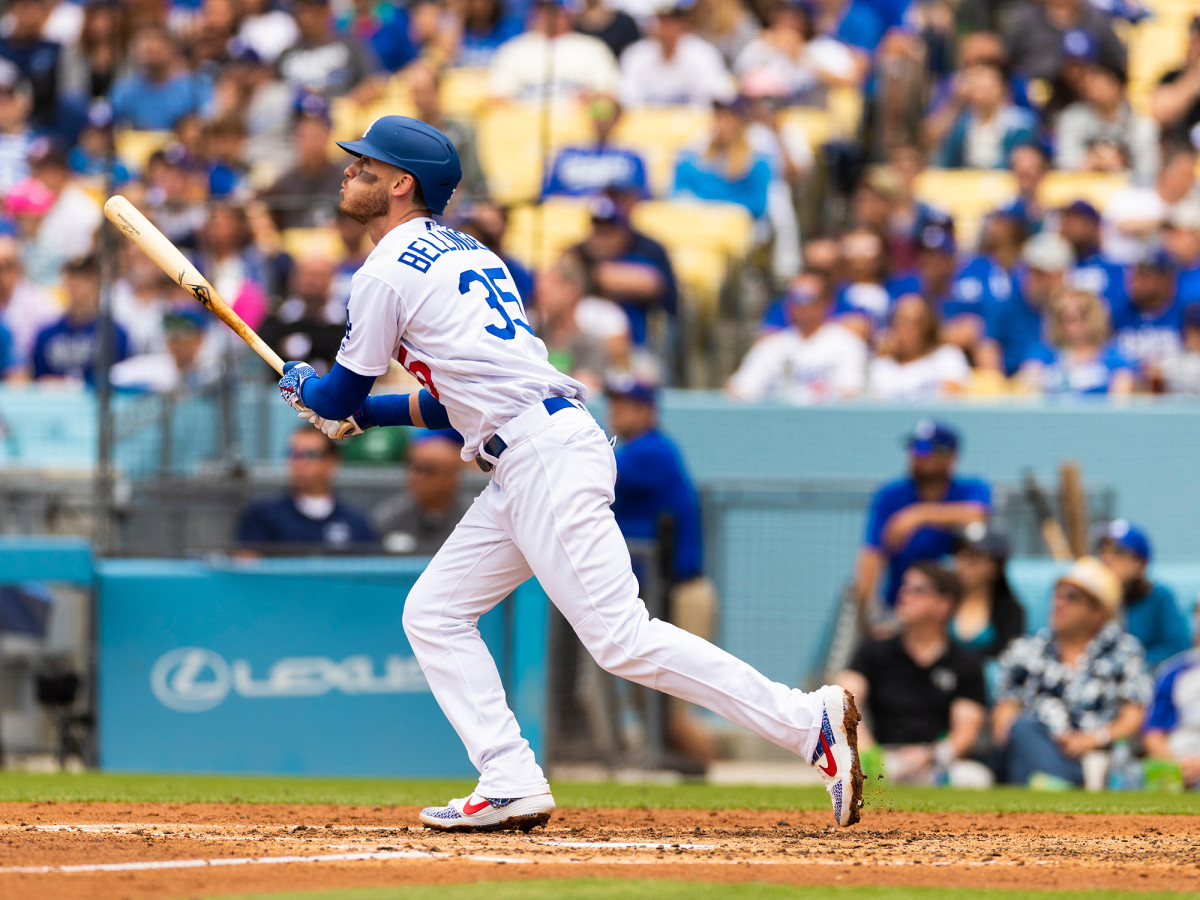Cody Bellinger Is Making Batting Average Cool Again

PITTSBURGH — The only man in the past decade to take a .400 batting average into the 50th game of the season found a word for the quest a few days later: “Insane,” Dodgers outfielder Cody Bellinger said about hitting .400 for a season. “Just insane. You can hit .300 for a week or two and then you have no shot.”
In four games, during which he went 4-for-18, Bellinger’s average dropped from .404 to .386.
Forget .400. These days .350 is the new .400.
In just the previous decade, pitching development, shifts, hyper-focused scouting, velocity, increased spin and deeper bullpens have conspired to plunge the major league batting average from .262 to .247, the lowest it has been in almost half a century.
Entering 2011, there had never been more than five consecutive seasons without a qualified hitter batting .350 or better. Now no one’s done it eight straight years. The last to do it was Josh Hamilton in 2010.
Now here comes Bellinger, the same guy who hit one home run as a high school senior, who was drafted after 123 other players in 2013, who was hitting .225 around this time a year ago, which prompted a heartfelt private meeting with his manager, and who didn’t start three of the five World Series games just seven months ago. Yep, that same Cody Bellinger.
Now Bellinger is so good that the same manager who scolded (for a lapse in hustle), consoled and benched him last year has no trouble comparing him to Mike Trout as one of the best players in the game.
“Absolutely,” Dodgers manager Dave Roberts said. “Because Cody can impact the game in so many different ways, just as Trout can.”
“Wait a minute,” I told Roberts. “We’re talking Mike Trout. Mike Trout.”
“I get it,” Roberts said. “What Mike Trout has is the consistency. He’s done it year after year after year. That’s the separator when it comes to greatness. He’s got a legacy. I’m just saying the way Cody is playing right now, he is playing on the level of the best players in the game.”

“Is this sustainable for an entire year?”
“Yes, it’s sustainable,” Roberts said, “as long as he trusts the process. It’s sustainable as long as he just keeps taking good at-bats and is not thinking about numbers. It’s sustainable as long as he keeps taking his walks. It’s sustainable as long as he continues to use the whole field. It’s sustainable as long as he sticks with his approach, because right now he can cover anything.
“Listen, it’s early. But about three weeks ago, he had a stretch of like three games where he got off his game and looked like he was looking to take everything to the pull field. It was two or three games, max. That’s been it the whole year. He got right back on track.”
Fifty-three games into the season, Bellinger, at least if you try some back-of-the-envelope math, could be headed for a .350 season with 50 homers and 20 stolen bases. Such a season doesn’t exist in baseball history.
To appreciate that even such a season is possible, you have to understand where Bellinger came from and how the game he plays is so different from the one Ted Williams played when Williams hit .406 in 1941–why hitting for a high batting average is so impressive today.
On the first day of the 2013 draft, Bellinger waited by the phone hoping some team would take him in the early rounds. After a big junior season, Bellinger hit .429 as a senior at Hamilton High School in Chandler, Ariz., but hit only one home run.
“It didn’t bounce on top of the fence,” he said, “but it barely got over.”
He had committed to play at the University of Oregon, but wanted badly to play pro ball. A high pick with a fat bonus would make that decision easier.
“I didn’t want to go to college,” Bellinger said. “I went to Oregon two days to visit. And they were two sunny days. But me in college was not something I really wanted to do.”
Scores of picks went by. The third round, the last of the first day, was about to begin. Bellinger began to grow a bit nervous. Then an official from the Oakland Athletics called. The A’s held the 27th pick of the third round, 100th overall.
“They told me they might take me with their next pick,” Bellinger said. “I was like, ‘Cool.’”
Instead, Oakland used the pick to draft Ryon Healy, a first baseman from, of all places, the University of Oregon. Healy would sign for $500,000. Bellinger figured he would inherit Healy’s first base spot at Oregon.
“I went to bed thinking, ‘I’m probably going to college,’” Bellinger said.
The next day, with the 18th pick of the fourth round, the Dodgers drafted Bellinger. He signed for $700,000.
Since then Bellinger already has hit 82 major league home runs. No other high school player taken in that 2013 draft has more than 16. He began developing power in Class A ball in 2015 after a swing change recommended by Dodgers minor league instructor Shawn Wooton produced a higher launch angle.
Bellinger smashed 39 homers as the 2017 NL Rookie of the Year, but fell to 25 last year with 151 strikeouts. His confidence swooned so noticeably that on June 5, 2018 Roberts called him into his office at PNC Park here for a long talk. “Just all about love,” Roberts said. Bellinger finished at .260, but struggled so badly against lefties that he did not start three World Series games started by Boston lefthanders.

After the Dodgers and Bellinger lost the last game of the year for the second straight year (both at home and both by the same score, 5-1), Bellinger immediately began working with hitting coaches Brant Brown and Robert Van Scoyoc. They didn’t look at any video from 2018. Instead, they studied 2017 video and worked at getting Bellinger back to that form.
The key change for Bellinger was returning to his 2017 setup, in which he holds the bat parallel to the ground and stands, a bit pigeon-toed, erect and calm. Last season Bellinger held the bat higher with the barrel up and waited with tension in his arms.
“Watching Cody right now what you see is a relaxed hitter,” Brown said. “He’s completely relaxed, body and mind. Last year sometimes you could see him jump at the ball, as if he had made up his mind he was swinging. This year everything about him is relaxed. That’s why his pitch recognition is so good.”
Last year, for instance, with tension in his setup and swing, Bellinger struggled to be quick enough to hit inside fastballs. He batted .193 against heaters in, not including a hitless postseason on those pitches. This year he is hitting .478 on inside fastballs, and already with more extra-base hits on those pitches (8) than he had all of last year (7).
Most impressively, Bellinger has as many walks as strikeouts (31). He has cut his whiff rate from 24% to 14%, a staggering one-year improvement in any era, but especially this one with its increasing strikeouts.
When Williams hit .406, the average major league game had 7.1 strikeouts. Now there are 17.5 strikeouts every game. Today the average reliever–not your All-Star closer, just your garden-variety reliever–strikes out batters at the same rate Sandy Koufax did (9.3 per nine innings). Of course, the average reliever also throws 94 mph with a wicked slider and every team is stocked with them.
The growth in inventory of pitchers who can throw hard and use technology and training to shape their pitchers is the greatest change in baseball in the past five years, let alone since 1941.
Consider this: Through 51 games this season Bellinger already has batted against far more pitchers (107) than Williams saw in the entire 1941 season (73).
Williams took almost a quarter of his plate appearances (23%) while facing a starter for the third time or more. He batted .431 against those fatiguing starters.
Bellinger has only 13% of his plate appearances while facing the starter a third time (and zero after). He is hitting .417 in those situations.
Williams hit .298 against relievers, including just .228 the first time he saw one in a game.
Bellinger hits .333 against relievers, including .338 in that first at-bat against them.
Bellinger and Williams, lefthanded hitters with great leverage, may have their physical similarities in the box: Williams was 6'3'', 205 pounds; Bellinger is 6'4'', 203 pounds. But don’t think of this as a comparison of the players, but as a comparison of the eras.
Today’s baseball is dictated so much by the army of pitchers keeping the ball out of play that what Bellinger is doing is actually underappreciated. He leads the league in WAR, on-base percentage, slugging, runs, hits and total bases, but these days his most impressive achievement is that he is making batting average cool again. That, too, is insane.
